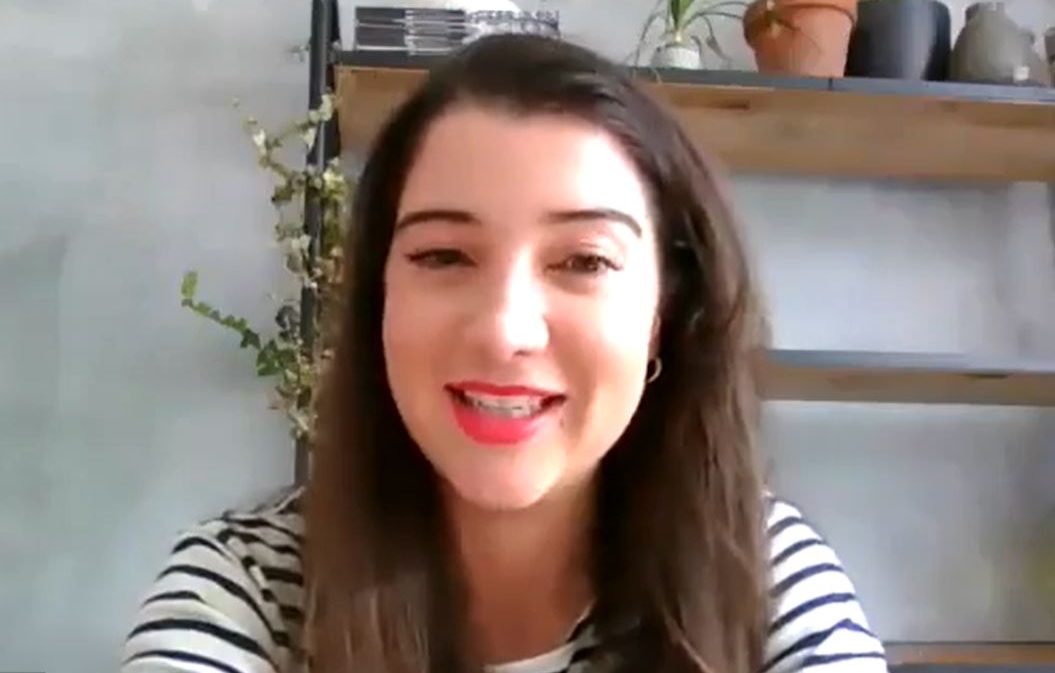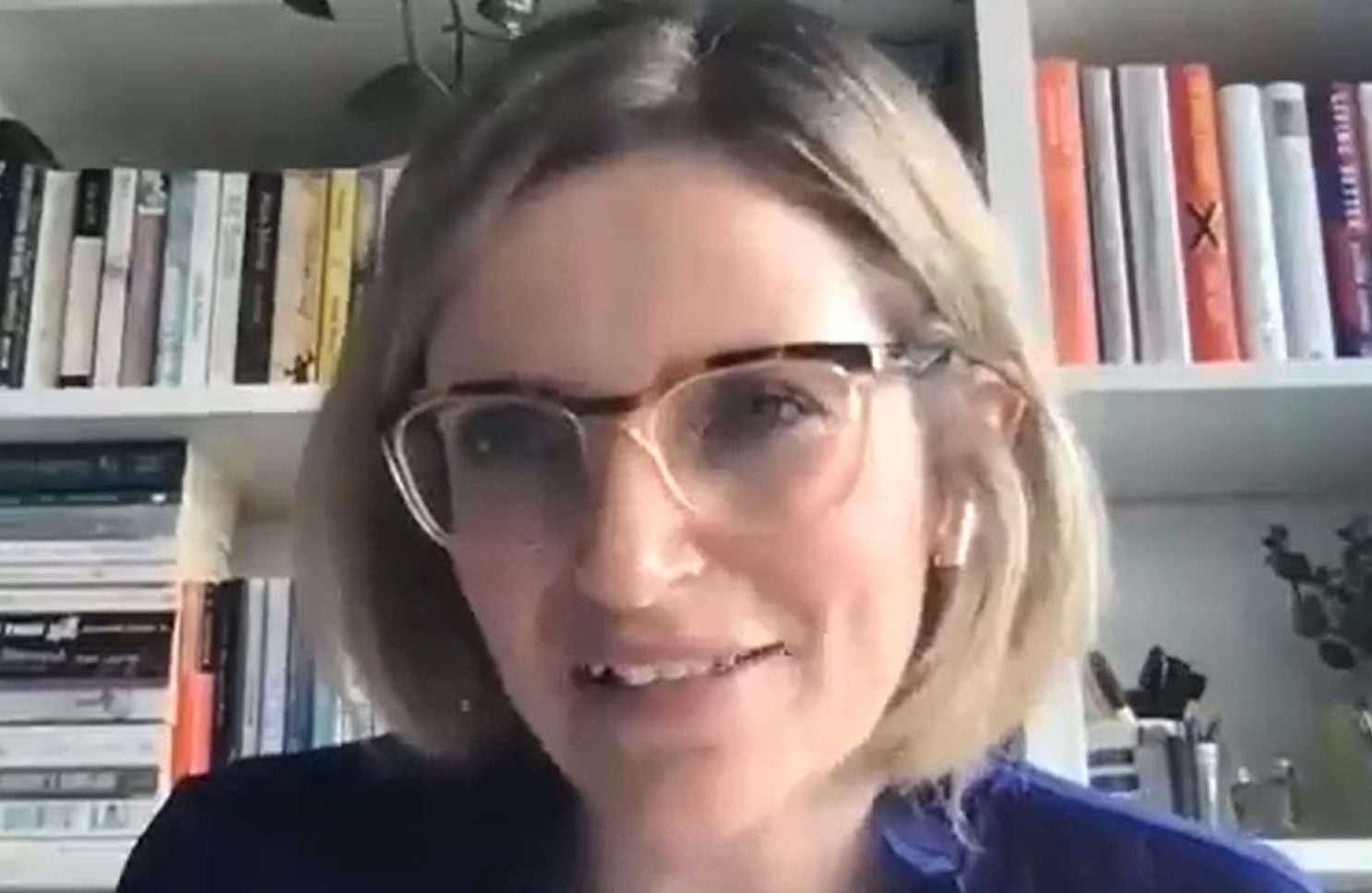 In this excerpt from her new book Working to Restore: Harnessing the Power of Regenerative Business to Heal the World, Esha Chhabra explores how multimillion-dollar brand Veja is leading the way in transforming supply chains to make the most ecologically and socially sensitive products possible.
In this excerpt from her new book Working to Restore: Harnessing the Power of Regenerative Business to Heal the World, Esha Chhabra explores how multimillion-dollar brand Veja is leading the way in transforming supply chains to make the most ecologically and socially sensitive products possible.
Soil is probably the last thing we think about when we buy stuff. How did the production of this T-shirt, or this shoe, impact soil? How did our coffee impact the soil it grew in? Was the soil improved, or degraded? Healthy soil—not dirt—is crucial to the commodities traded in the global economy: cotton, coffee, tea, rubber, cacao, wheat, oats. So many of the things we consume every day are grown in soil, not manufactured in factories. Soil isn’t sexy, but it’s what keeps us alive—truly. We come from soil and return to soil. It is at the core of human existence. And soil is facing a bit of a crisis at the moment. If the soil doesn’t have nutrients, it doesn’t matter what seed we put in it—the seed will struggle to grow.
Soil is at the core of global commerce. Consider furniture, which relies on timber. Consider our shoes, which are often made of leather, a by-product of the meat industry, which relies on animals that consume grasses. The classic T-shirts we love require bales of cotton to manufacture. Livestock, forestry, and textiles are all connected to soil health. The farming of animals concentrated in one area can have a negative effect on soil quality and lead to overgrazing; land cleared for animal husbandry or for timber extraction affects the flora and fauna of that area; aggressive cotton farming can deplete soils.
Much of the world’s soil has been turning to dirt, says David Montgomery, a University of Washington professor of earth and space sciences and the author of Dirt: The Erosion of Civilizations, which describes the problems that result from stressed soil. Turns out societies that degraded their soil didn’t prosper in the long run.
While food may seem like an obvious industry to invest in soil health, what about retail brands in fashion? How can companies help improve soil quality when they’re not selling tea, coffee, fruit, or vegetables? They’re not sitting in the hills, or on the farms. Are they actually affected if soil degradation is taking place somewhere else? The short answer: Yes, very much so.
Cotton is one of the most commonly used materials in clothing and accessories. It has long been grown with a heavy dose of pesticides, which contributes to poor soil quality. When two French entrepreneurs, Sébastien Kopp and François-Ghislain Morillion, decided to make shoes, they didn’t know any of this. Today, they run a multimillion-dollar brand, Veja, which focuses on one thing: making the most ecologically sensitive shoes possible. As they’ve built the company over the last seventeen years, they’ve also been helping rebuild the soil on organic cotton farms in Brazil and preserving the Amazon canopy and its carbon-rich soil.
I met Kopp in a swanky hotel in the heart of Paris, just outside the Place Vendôme, where Paris Fashion Week was in full swing. Kopp arrived wearing aged denim and a weathered pair of Vejas. In a crowd of women in body-hugging dresses, overflowing with sequins and jewels, he was definitely the odd man out. But he prefers it that way.
“A few days ago, I was in the Amazon and now I’m sitting here with you,” he said, sipping an espresso. “Amazing that it’s all on the same planet and in the same week.”
Kopp is less interested in what is fashionable and more interested in getting people to see the connection between what they wear and how it’s made. He abhors the word “sustainable.” “We don’t do ‘sustainable,’ ‘ethical,’ ‘slow,’ or any other words used to describe alternative fashion. “We just focus on being transparent and fair,” Kopp said. Transparency and ethics have not been at the core of the global athletic footwear market, which was estimated at a whopping $75 billion in 2015. It’s estimated to go up another $15 billion by 2023. Kopp and Morillion want to see how much of that market they can either gain or transform with their nontraditional ways.
Children of the ’80s and students of global development and political science, the duo spent a few years after college traveling around the world to see corporate social responsibility projects in practice. They were pretty disappointed with the results. “It was a lot of talk, not a lot of transparency, or actual actions on the ground,” Kopp says. In 2003, while doing audits for a French fashion brand at a Chinese factory, they discovered thirty workers crammed into a 270-square-foot room with a single hole to drain the workers’ shower and also allow them to relieve themselves. “We realized that globalization had gone wrong,” Kopp says.
They returned to Paris and instead opted to work with a small French brand, Alter Eco, focused on fair trade. Alter Eco, then in its early days, was building a business around direct supply chains, a “radical but obvious” concept, Kopp says. The company sold orange juice, chocolate, rice, tea, and coffee, which it was sourcing directly from farmer groups to whom it was paying fair-trade wages. Alter Eco started in 1998 and grew in the 2000s, producing offshoots in the United States and Australia. At the time, the conversation in business was still stuck on philanthropy; even corporate social responsibility (CSR) had yet to make its way into the corporate lexicon.
However, Kopp and Morillion, experienced travelers by now and having seen the backend operations of companies, realized that it was possible to build a business that benefited the growers, not the marketers. “Most people don’t realize that most of their money is going to marketing, not to the maker,” Kopp says.
Inspired by Alter Eco, the two decided to launch their own project,focused on “deconstructing the sneaker.” Sneakers had become popular in the late 1980s and ’90s as everyday wear, often with athletes sporting and touting the latest styles. But most of the money generated by big brands was going into marketing budgets, not the supply chain, according to Kopp. “We didn’t know much about shoes, but it was something everyone wore; we loved them as teenagers, and we knew that we could get all the pieces required for the shoe in one place: Brazil.”
He had travelled frequently to Brazil with Morillion previously, but there was a significant problem: neither one spoke fluent Portuguese. That didn’t stop them, though: “We just realized that if we, two twenty-five-year-old idiots from France, who didn’t even speak the language fully, could figure out how to build a fair and transparent supply chain, then the big companies could do it, too—if they want to.”
Investing approximately $5,500 (€5,000) each, they set out to build the first prototype shoe for Veja (the name means “look” in Portuguese and is meant to suggest “look behind the label”). They swapped virgin petroleum-based fibers and 100 percent synthetic rubber—the most popular combination used in sneakers—for natural and recycled materials: organic cotton, and wild rubber from the Amazon. Today, for the shoe uppers Veja’s styles use different combinations of organic cotton, a material they call “b-mesh,” made out of recycled plastic bottles and leather. Twenty-two styles use only organic cotton. The soles are made of a blend of wild and synthetic rubber, delivering performance and durability.
When Kopp and Morillion started, organic cotton was not as readily available. Even a decade later, Kopp concedes, “we didn’t always have enough of it to do all our laces in organic cotton.” In 2004, just a year after having their awakening in the Chinesefactory, Kopp and Morillion dove into the effort of building a supply chain for Veja. They visited the Association for Educational and Cultural Development (Associação de Desenvolvimento Educacional e Cultural de Tauá , or ADEC), a cooperative then of about thirty farmers— as of 2022, eighty-eight—producing organic cotton in northeastern Brazil.
“These farmers had not been able to sell their organic cotton for six years,” Kopp says. They were practicing agroecology, a more nuanced way of farming that surpasses organic. These farmers were forgoing monocrops (of just cotton) for a variety of staples that helped feed their families as well as the soil. In addition to cotton, they grew corn, sesame, and beans—the bulk their diet.
At the time, we didn’t know much about agroecology. We learned that it was much more than just organic. And then we met the pope of agroecology, Pedro Jorge,” Kopp recalls. Agroecology is what the name suggests: agriculture that has a role in the larger world of ecology. It’s a recognition that agriculture doesn’t have to happen in isolation but can be a part of the messier natural world. Jorge, one of the brightest minds in agriculture in Brazil, shunned traditional agricultural practices that were aimed at increasing yield. Instead, he became a proponent of farming that’s careful not to damage resources while maximizing and using the surplus that nature offers for food production.
Kopp and Morillion followed his direction, sourcing their cotton from ADEC. “We went for fair trade organic cotton because the majority of cotton produced every year in the world comes from intensive monoculture crops,” Kopp says. “What do monoculture crops do? Deplete soil quality.”
In 2007, they went to the first organic cotton fair in Brazil, where they met Maria Valdenira Rodrigues de Almeida, from a village in the northeast of Brazil, whose father was a farmer. Theirs was a family of limited means, but Rodrigues was a university student. She had imbibed that local knowledge and then decided to specialize in agronomy. At twenty-seven, she was a university student learning about agroecology—just what the Veja founders wanted to practice and support. They asked her to join as an agricultural engineer for the startup after she had completed her studies.
Ten years later, Rodrigues became an asset to the brand, Kopp says. “Most fashion brands don’t have an agricultural engineer, but if you’re making a product with cotton, it makes complete sense.” Growing cotton in this corner of Brazil is not easy. This is a dry, parched area of the country that had been facing drought-like conditions for six years. Climate change is already being felt, according to Rodrigues: “Farmers have had to sell their animals because they had no food and no water.”
All of the organic cotton here is rain-fed, not irrigated. However, in 2015, the drought became so severe that Veja was left without any organic cotton crop. They resorted to using recycled organic cotton that year and since then have expanded their supply chain to include organic cotton from Peru to ensure they have enough supply. That’s why it’s all the more important, Rodrigues says, to think about how they farm: if water is limited, the soil must be fertile in order for the farmers to continuously reap harvests.
That means letting critters control the land, not pesticides, she explains. “Conventional farming uses chemicals to control pests and diseases; [that] chemical [does] not make selection among beneficial or malevolent pathogens and ends up destroying natural predators and soil fauna. The non-use of chemicals in organic production preserves these natural enemies such as a ladybird.”
With Veja’s investment in the region, and commitment to buying each harvest, farmers are learning from each other about how to better manage these challenges. “It’s been beneficial for them to learn sustainable land management,” Rodrigues says. “The exchange of knowledge that happens between farmers of different regions at various meetings is helping spread the message.”
From 2004 to 2021, Veja has bought 954,358 kilograms of organic cotton. In 2021 alone, Veja purchased 410,000 kilograms of cotton (about 905,000 pounds of cotton) in advance of the actual harvest, the production of two hundred families. The company and the cooperative have decided to make all their transactions public; consumers can view the contracts between the cotton cooperative and Veja.
Kopp is hoping that by disclosing all the details, including the pricing of their supply chain, consumers will start demanding the same information from bigger players in the footwear industry, creating a domino effect. Similar to their cotton supply chain, Kopp decided to go an unconventional route with the soles of the shoes as well. “What is the sole of that shoe?” he says, pointing to a bystander wearing a pair of nondescript sneakers. “It’s not rubber. They say it’s rubber, but it’s synthetic rubber, or plastic.”
Veja now sources rubber from nearly 1,200 families in the Amazon. In the past fifteen years, they’ve purchased 1,928 tons of wild rubber. “Business is not just about selling stuff, but also making people who live in these environments protectors of their land,” Kopp says. What’s most noticeable is that these businesses, which are so fixated on restoring lands, protecting green spaces, and enriching the soil, are actually profitable, viable businesses. Veja sells more than two million pairs of shoes a year and pulled in $115 million in 2020—without any advertising.
“Most shoe brands are taking 70 percent of the retail price and putting that to marketing, not manufacturing. We decided to invest that extra money in our supply chain,” Kopp says. And they’re not telling people to buy more of their shoes. “Consumption is a big problem in society; that goes back to the heart of so many environmental problems,” Kopp acknowledges. “We have some people who loved the shoes, but then buy too many of them. I would say a couple pairs are enough. Too much of anything is a problem for the ecosystem.”
Esha Chhabra will be in conversation with Anna Anderson in London on 23rd May 2023. More information




